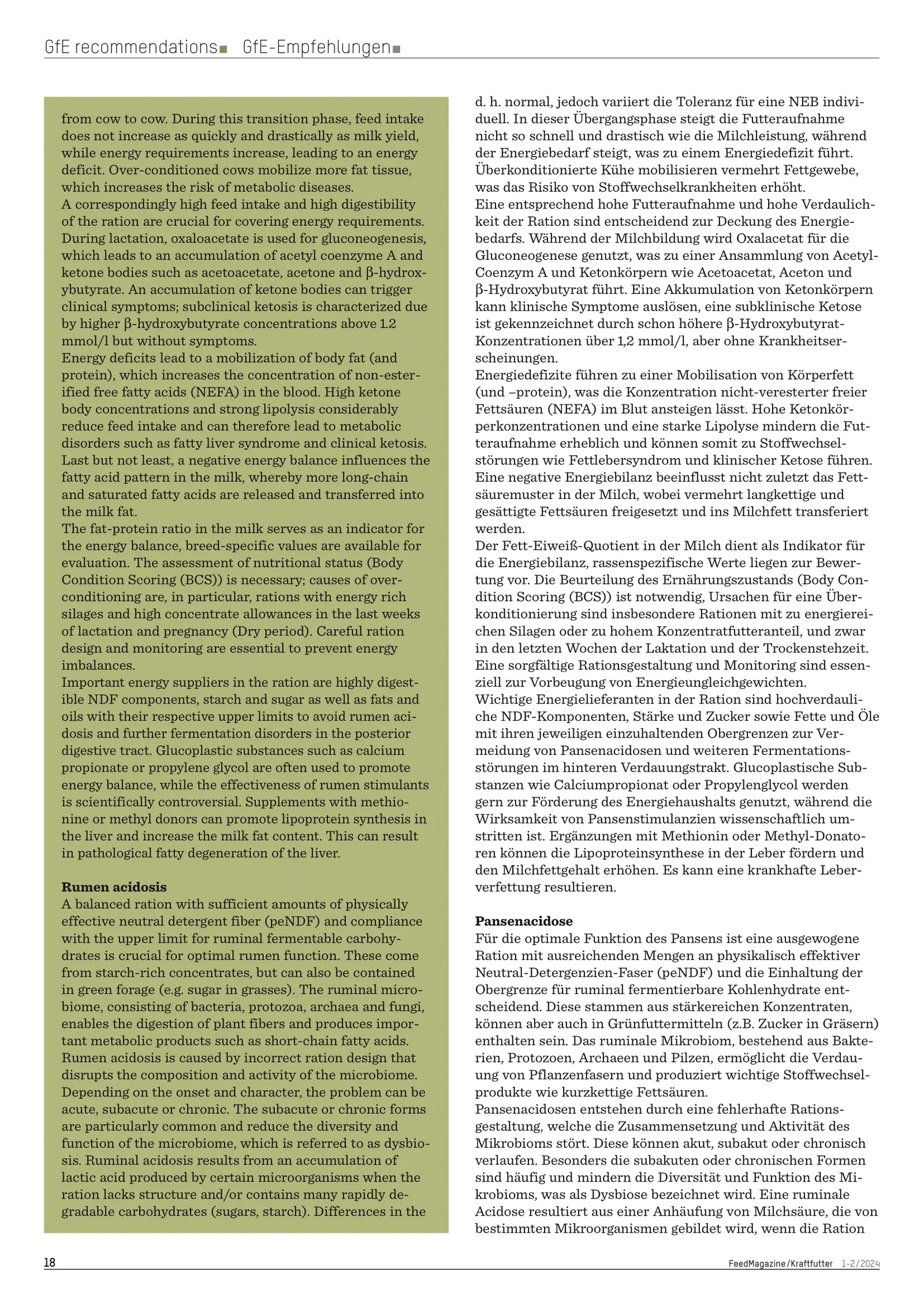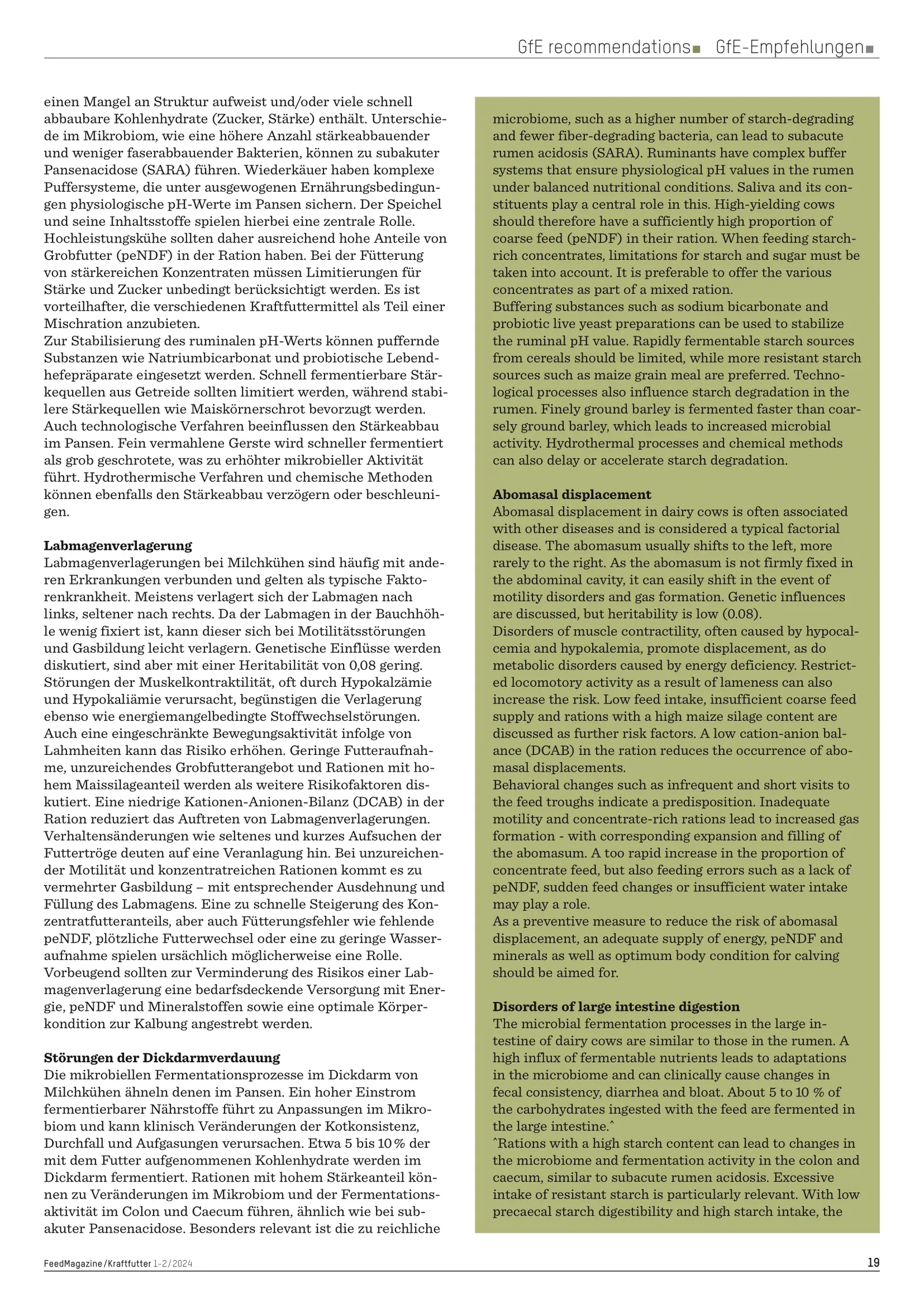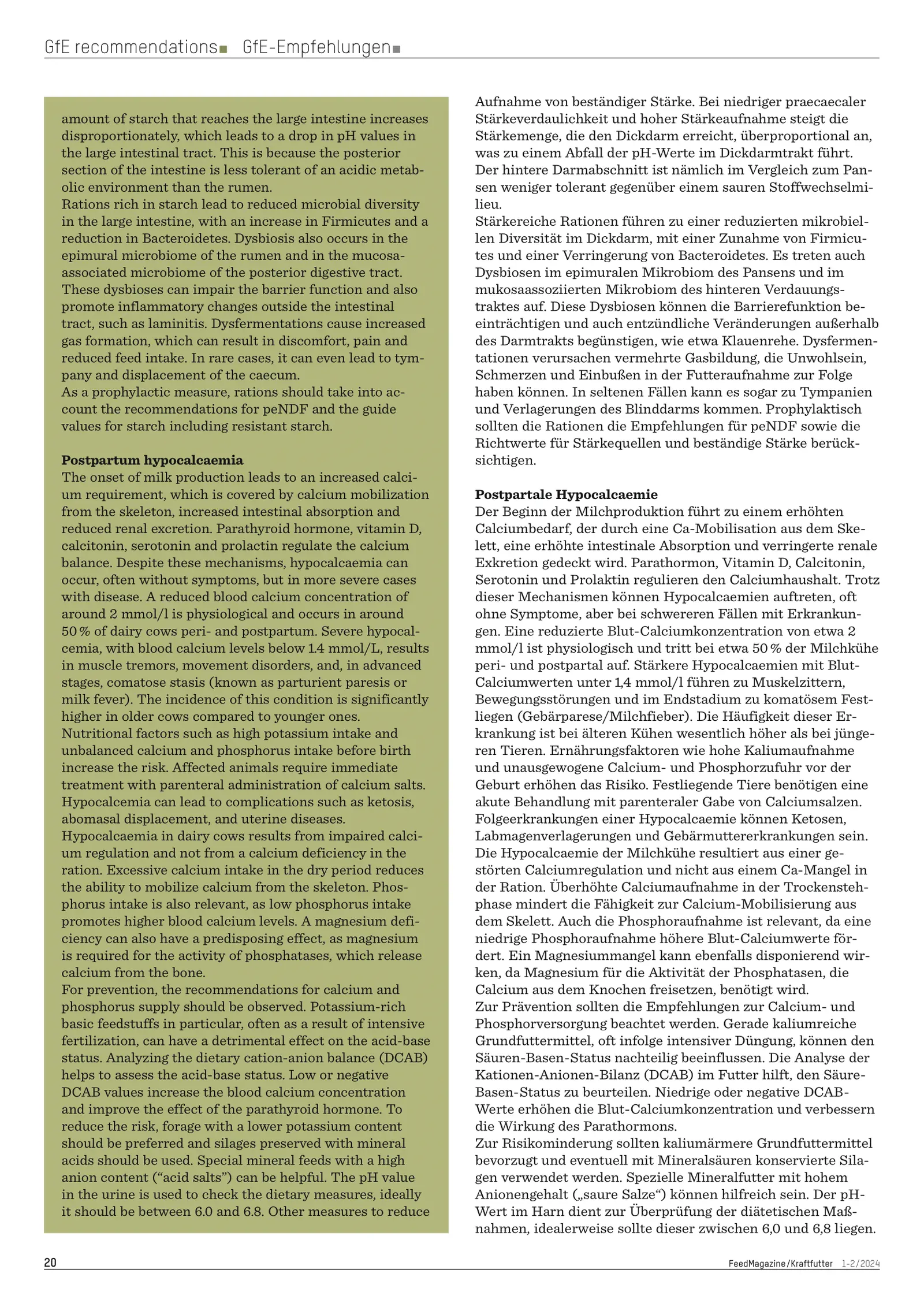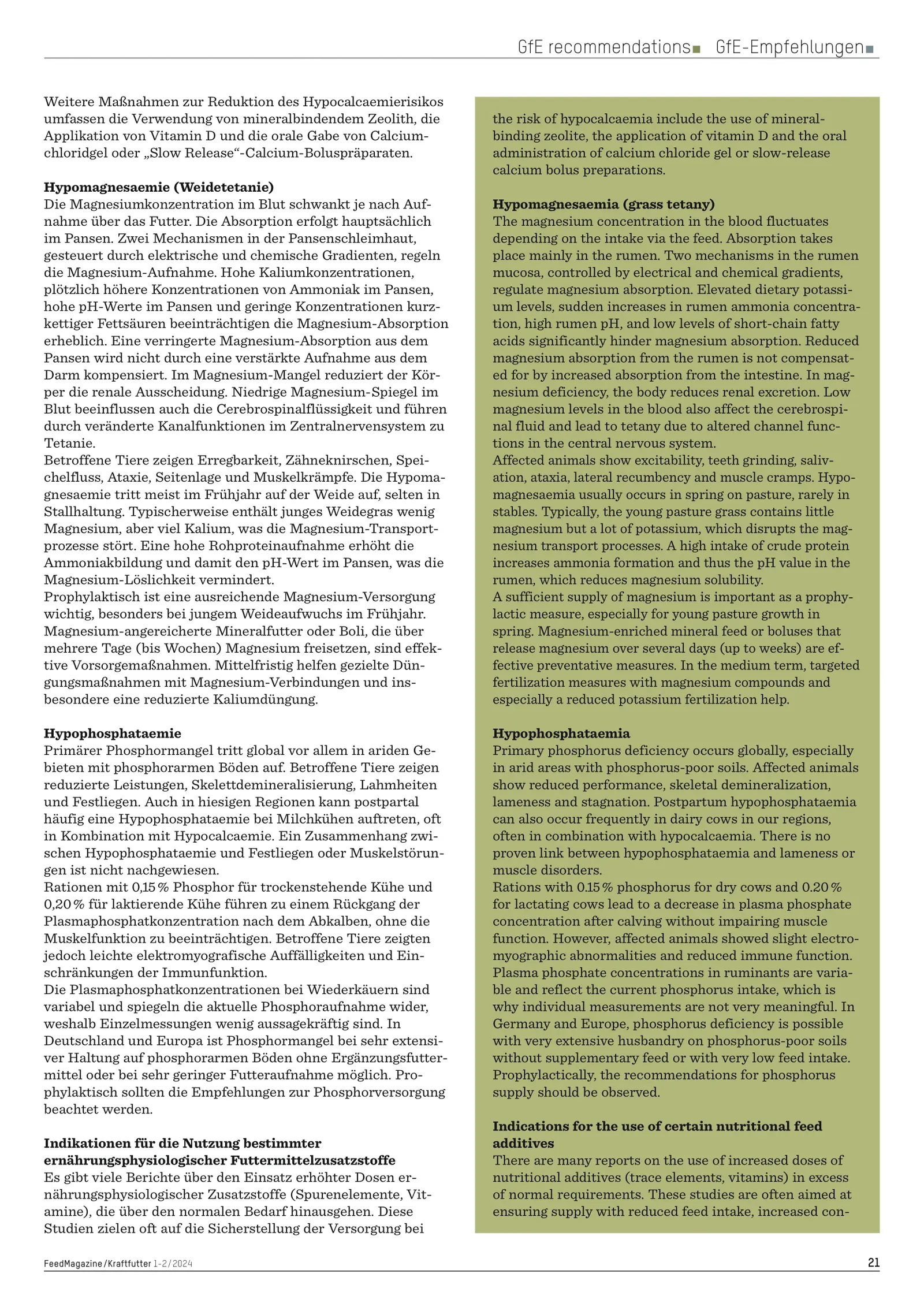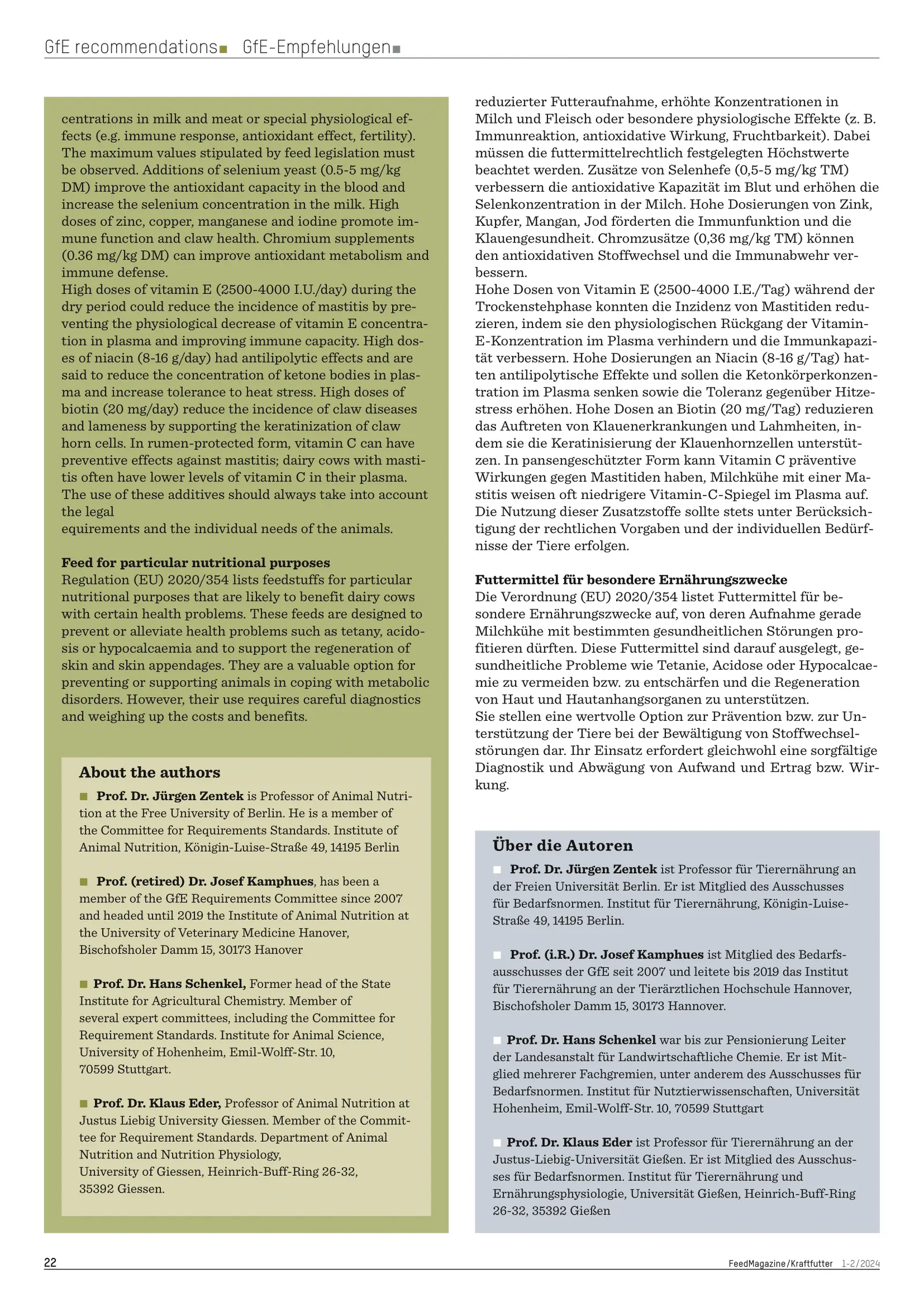Optimizing feeding to promote health
Source: FeedMagazine/Kraftfutter 1/2025
Authors: Prof. Dr. Jürgen Zentek, Prof. (i.R.) Dr. Josef Kamphues, Prof. Dr. Hans Schenkel, Prof. Dr. Klaus Eder
The new GfE recommendations highlight the importance of targeted feeding strategies to prevent and manage metabolic disorders in dairy cows.
- Negative Energy Balance (NEB) is common in early lactation, leading to fat mobilization, ketone body accumulation (e.g., β-hydroxybutyrate), and risks like fatty liver syndrome and clinical ketosis. High dry matter intake, ration digestibility, and the use of glucoplastic substances such as calcium propionate are crucial.
- Rumen acidosis, especially subacute rumen acidosis (SARA), results from inadequate physically effective NDF (peNDF) and excessive ruminally fermentable carbohydrates. This causes dysbiosis in the ruminal microbiome, impairing fermentation and performance. Use of buffer substances like sodium bicarbonate and probiotic live yeasts can stabilize rumen pH.
- Abomasal displacement is often linked to energy deficiency, low feed intake, motility disorders, and high maize silage diets. Preventive strategies include adequate energy, peNDF, mineral supply, and maintaining optimal body condition at calving.
- Disorders of large intestine digestion arise from excess resistant starch reaching the large intestine, causing pH drops, dysbiosis, and symptoms like bloating, diarrhea, and even caecal displacement. Ration formulation should limit starch content and include adequate peNDF.
- Postpartum hypocalcaemia is linked to increased calcium demand and impaired calcium regulation, not dietary calcium deficiency. Prevention includes DCAB management, use of anion-rich mineral feeds, calcium boluses, and avoiding excessive potassium intake.
- Hypomagnesaemia (grass tetany) occurs due to impaired magnesium absorption in the rumen, often triggered by high potassium, rumen alkalinity, and young pasture. Prevention includes magnesium-enriched minerals, slow-release boluses, and balanced fertilization.
- Hypophosphataemia can occur postpartum or in phosphorus-deficient regions. It is often subclinical but may affect immune function. Proper phosphorus supply (0.20% in lactating cows) is essential.
- Nutritional feed additives (e.g., selenium yeast, vitamin E, niacin, biotin, chromium) may enhance immune function, antioxidant capacity, heat stress tolerance, and claw health.
The New Regulations for Dairy Cow Feeding in HYBRIMIN Futter X
The latest GfE recommendations are integrated into HYBRIMIN Futter X. Contact our support team for more information.
 Croatian
Croatian Danish
Danish French
French German
German Greek
Greek Polish
Polish Portuguese
Portuguese Romanian
Romanian Russian
Russian Spanish
Spanish Turkish
Turkish
